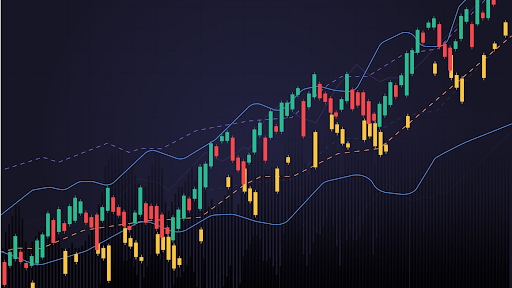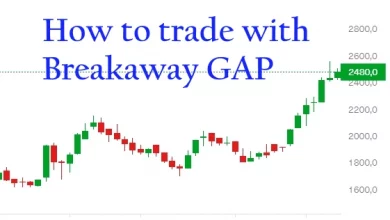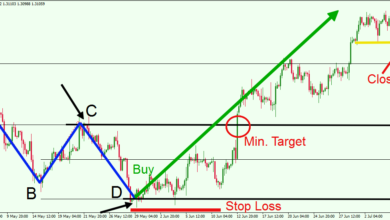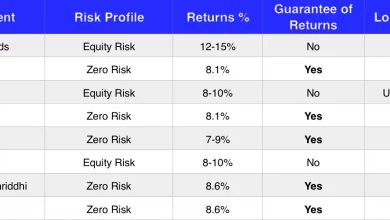WHAT IS MOMENTUM TRADING?

The technique of purchasing and selling assets based on the strength of recent market movements is known as momentum trading. Momentum trading allows traders to determine the rate of change in the price or volume of an asset. Momentum is commonly thought of as an oscillating measure because neither price nor volume can continue in one direction continuously.
In the money industry in India and around the globe, momentum is a crucial and well-understood term. Long-term investors, as well as day traders, use it. When an item achieves a greater price, traders and investors are more likely to pay attention to it, pushing the market price even higher. This continues until a significant number of sellers enter the market, such as when an unexpected occurrence leads them to reconsider the asset’s price. When there are enough sellers in the market, the momentum shifts, and the price of an asset falls.
Momentum traders try to determine how significant a trend is in a particular direction, then open a stake to profit from the predicted price movement and close the position when the momentum begins to weaken. Instead of attempting to pinpoint the peak and bottom of a trend, a momentum trader concentrates on the main body of the price movement. They want to take advantage of market emotion and herding, which is when traders follow the crowd. The RSI, MAs, the momentum indicator, and the stochastic oscillator are all popular indicators for momentum trading.
This article will teach you all you need to know about momentum trading.
Table of contents
What is the Process of Momentum Trading?
Short-term asset price fluctuation provides chances for momentum trading techniques. In the absence of other variables, it is assumed that if the price of an asset is rising, it will continue to rise.
Consider momentum trading to be a moving vehicle. When you first start going ahead, the speed is sluggish. This is when you find a stock that is rising in value. The speed of the automobile rises as it accelerates. If you’ve found a stock you like and bought it, your investment is now growing.
When an automobile sees a red traffic light, it slows down and slows down. This is comparable to when you profitably exit a trade after noticing a momentum drop in the asset.
In trading, the use of momentum
Stock traders, for example, might concentrate on notoriously volatile momentum stocks. For example, because Musk is always in the headlines, it is possible to earn more money trading it than GM. Likewise, a highly unpredictable stock like Pandora may earn more money day trading than a conventional firm like Commodore
Momentum trading may be divided into two categories. Momentum in a cross-section and Momentum in a time series. The effectiveness of an asset in comparison to its previous performance is known as time-series momentum. A precise amount profit level is used to identify time-series momentum, and assets that surpass the threshold are purchased.
The output of an asset, when contrasted to the performance of other various asset classes, is referred to as cross-sectional momentum. This may include buying the ten largest best-performing assets and selling the lowest ten performing assets.
Stocks aren’t the only asset class where momentum techniques may be used. They may even be used in the futures and Treasury markets!
Factors Affecting the Momentum
A variety of factors influence an asset’s short-term price fluctuation. The following are a few of these elements.
- Essential factors:
If a firm releases positive or negative fundamental news, its stock price will move in a certain way for the following few days. The market should, in theory, discount this information immediately, but news infiltration takes time for significant releases.
- News events:
Current events can have an impact on an asset’s momentum. This impact is lower in the case of a predetermined news item, such as an earnings release, because the news is expected. When an unexpected news event occurs, such as an acquiring firm, the momentum shifts.
- Market volatility:
When trading with momentum, market volatility is a key consideration. Because a position is taken after the commodity price has begun to move, high volatility indicates that there is a possibility for the price to rise higher, allowing you to profit.
In negative markets, the inclination of traders to follow the majority is more pronounced. The herding effect decreases momentum traders’ profit margins.
Top momentum indicators
Indicators are an excellent technique to trade with momentum. Thankfully, several indications might assist you. The moving average, for instance, is a favorite indicator among momentum traders.
Traders should utilize the moving average to determine whether momentum is fading. When a result, the best course of action is to sell the index short and profit as the price declines. Many day traders have the problem of not knowing when the momentum is about to cease.
The momentum indicator, which is accessible on many of these interfaces such as Meta Trader and Trading View, is another popular indication for trading momentum. The indicator shows a single line below the chart that travels up and down. It essentially gauges a financial asset’s rate of change or speed.
As a result, by observing this motion, one may readily determine whether it will continue or shift completely. The indicator may also be used to spot divergences and even continuations.
The MACD in momentum trading
The Moving Average Convergence Divergence is yet another prominent momentum indicator (MACD). This is a basic indicator that turns two moving averages into an oscillator.
The quick-moving average has a period of 12 in most situations, while the long-moving average has a period of 26. The average smoothing factor employed is 9. As a result, when the two major moving averages cross, you may employ the MACD in momentum trading. When the price of an asset is in a positive trend and the two moving averages cross, it’s typically an indication that the trend is fading and it’s time to sell.
When the two lines crossover in a negative trend, it is typically a signal to go long. The fundamental idea of momentum trading is “buy high, sell high,” and vice versa.
Richard Driehaus, a well-known investor, is known as the “Founder of Momentum Investing,” and his strategies have formed the foundations of Momentum Trading. Driehaus believes in trading losers and allowing winners to ride, buying back the money from losers in all other equities that were showing signs of gaining traction.
Following the momentum trend
Trend following is another method of harnessing momentum. This is when a trader looks at stock or another asset and decides to invest in it. For example, if the GBP/Usd is increasing, they may profit from the market action by purchasing the currency pair.
Furthermore, if Nikola’s stock is dropping in value, they may sell it short and profit as the price falls.
Momentum in finance.
The following important elements influence financial momentum:
- Volume
- Time
- Volatility
Volume
The quantity of a specific item exchanged in a given time frame is referred to as volume. The number of assets exchanged, not the number of transactions, determines the volume. For example, if five buyers each buy one item, the volume seems to be the same as if one buyer buys five of the asset.
Volume is key to momentum traders since they also have to be able to join and exit positions rapidly, which requires a constant flow of buyers and sellers in the markets. A liquid market is one with a large number of buyers and sellers, making it simpler to exchange an item for cash. A market is considered unstable if it has a small number of buyers and sellers.
Volatility
The loaf and cheese of momentum traders is volatility. It relates to the extent of the shift in an asset’s value; a market with high volatility has large price swings, whereas a market with low volatility is relatively stable.
Momentum traders will search out turbulent markets to profit from short-term increases and decreases in the value of an asset. Because momentum trading tries to profit from market volatility, it’s critical to have a risk management plan in place to safeguard your trades against market swings. Stops and limitations should be specified.
Time frame
Momentum trading methods are generally geared at short-term market moves, although the length of a transaction can be determined by how much the trend remains strong. This may make it appropriate for traders who favor long-term strategies like making a profit and also traders who choose short-term strategies like day trading and scalping.
Advantages of Momentum Trading
- Momentum trading differs from the traditional value investing strategy of “buying cheap and selling high.” In the financial markets, momentum trading methods have shown to be lucrative over time.
- Momentum trading is more common than “buying cheap and selling high” in reality. That’s because you are purchasing an asset that is already rising in value. You don’t have to acquire an overpriced asset and then wait for the market to revalue it so that your investment becomes lucrative.
- Another benefit of employing momentum trading is the possibility of making large profits in a short period. Because you’re taking advantage of the market’s volatility, momentum trading comes down to tracking the market’s progress taking full advantage of your money.
The Risks of Momentum Trading
Momentum trading, like other trading techniques, comes with its own set of dangers. The following are some of the risk factors to be aware of.
- Entry and exit timings:
The techniques for trading momentum are very time-sensitive. If the entry position is made too late, the investment may end up being a loser. Similarly, even after recognizing the opportunity, if the decrease of momentum is erroneously detected and trade is quit too soon, you miss out on prospective gains.
Because this approach seeks short-term opportunities, the aggregate number of transactions might be significant when compared to long-term behavioral economics or buying an asset.
Time-consuming:
The buyer must keep a careful eye on the openings as well as be up to speed on all important news for the commodity being exchanged.
- Market opinion:
Factually, momentum trading appears to work best in optimistic markets. This is due to the human tendency to herd together in dangerous situations (bear market). For that very same trading opportunity, hoarding leads to a loss in profit per trader. This impact may also be noticed in the previous two-approach outcomes.
The momentum approach is based on the assumption that the trend will continue in the same direction. However, the tendency can sometimes reverse, and this technique fails.
When trading the momentum trading method in real markets, you must use proper risk management strategies. Position size and trailing stop-loss can be utilized to minimize market exposure and decrease strategy pullbacks.
How to Start Momentum Trading?
To begin trading with momentum, you must first have a thorough understanding of the ideas of momentum trading, including how to detect momentum, the elements that influence momentum, and the dangers involved with this sort of investing pattern.
If you want to learn more about momentum trading, have a look at the Quantra course on momentum trading techniques, which explains the principles with examples and works them out in Python code. More trading techniques are covered in the course, including how to use indicators to capture different forms of momentum, how to use asset futures to execute momentum trading, and how to take advantage of event-driven opportunities. Blueshift is used to execute the momentum trading techniques, and IBridgePy models are also given!
How to Detect Momentum?
It’s critical to recognize a momentum trading opportunity so you can be timing your entrance stake in an asset. Technical indicators or quantitative models can both be used to determine momentum.
The following are some of the technical indicators that may be used to determine momentum:
- An oscillating indicator often used to identify the trend of the asset’s price motion is known as a momentum indicator.
- The RSI (Relative Strength Index) is an oscillating indicator that may be used to determine if an asset is overbought or oversold.
- Moving averages are indicators that may be used to detect emerging patterns in the price of an asset.
- Breakout Indicator: These indicators are being used to pinpoint the market or volume breakaway.
- Statistical Analysis: Statistical analysis, such as the Hurst Exponent test, can be used. The Hurst Exponent is related to the asset’s hysteresis and may be used to determine if the asset is growing or not.
The different approaches for detecting momentum are explored in depth in the Quantra training on momentum trading strategies.
You may also incorporate signals from all of these indicators to create a more effective momentum detection system for complicated trading strategies.
Final thought on momentum Trading.
Both day trading and long-term investment require a high level of momentum. When implemented correctly, it is a successful strategy. We propose that you select some of the top momentum stocks and find the right stocks before devising a day trading plan.




